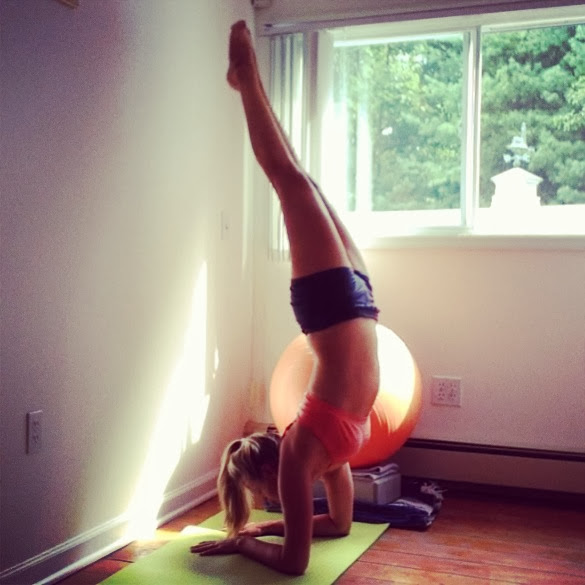Why am I telling you about my childhood spelling bee defeat in my yoga blog? FOUNDATION. If I would have focused on the foundations of spelling, rather than immediately focusing on tricky words and exceptions, I would have been much better off. The same goes with yoga. Learn proper alignment in basic poses and the muscle memory will help poses that require additional balance, flexibility, and strength come (more) easily. So where are we starting?
Downward Facing Dog aka Down Dog aka Adho Mukha Svanasana
In a vinyasa yoga class, you will enter more down dogs than any other pose. Its a "resting pose", but it doesn't always feel that way. Down dog is mainly used after a "vinyasa" (I'll explain in a later blog) to reset the body in between "mini sequences" (short sets of choreographed poses to open, strengthen, and/or create heat, a vinyasa class is made up of several mini sequences). It is also used at the beginning of class to start opening the joints and muscles. I see this pose improperly executed in many classes, sometimes by people who fancy themselves advanced yogis. Just like the spelling bee, start with a strong foundation and you'll be more prepared for everything that comes after. Unless you take a beginners class (and you should!), your teacher may not have time to fully explain this pose.
1. Begin in plank pose: Hands shoulder distance apart with the fingers spread to a comfortable distance, middle or index finger pointing to the front of the room (you'll hear both, go with what is more comfortable for you). Hands are placed directly under the shoulders, which are externally rotated; turn the eyes of the elbows forward, triceps back. Press into the mat with the base knuckles of your index finger and thumb. Engage all ten finger tips. Shoulder blades soften down the back.
2.Toes tuck under with the feet hip distance from one another. Spine is neutral and long, as much space as possible between the crown of the head and the soles of your feet, gaze between the thumbs.
3. Keep your hands and feet exactly where they are. Fight the urge to walk your hands in. Lift the hips up and back, gently melting the chest toward you thighs. Keep the external rotation of your shoulders and relax them away from your ears, blades melting down your back. Bend your knees slightly and internally rotate your hips, gently "pigeon toe-ing" your feet; you should not be able to see your heels. Keep the ribs tucked in and a long straight spine. Your low back with naturally want to round to go "deeper" into the pose, avoid this by lifting the sits bones higher and and even further from your shoulders, almost creating an arch in the low back. Gaze between your heels. Relax your calves, lowering your heels toward the mat. Its okay if your heels don't touch the mat- I practice daily and mine usually don't touch until the end of class, if at all.
Its a lot to think about for a "resting pose". Keep doing it right and your body will memorize the form. Keeping your arms in proper alignment will help you nail your handstand later in your practice. Proper alignment of the hips will open them for deeper stretches. Proper alignment through the legs will help you with every standing pose. Be patient with yourself. The basics are important.
Modifications:
- If you're new to yoga, this might be a lot on your wrists. Thats why we press through the knuckles and finger tips. That will immediately remove some pressure. If that isn't enough, move to a wall, use the exact alignment with your hands placed on the wall. Next, move back to the mat and place your hands on blocks, putting more weight into your lower body.
- If you have very tight hips or hamstrings, keeping the proper alignment of the low back and hips will be more difficult for you. Rather than sacrificing form, bend your knees more. Bend them a lot if you need to. Its better to keep the alignment than have straight legs.
Are you wondering how Wesley did in the spelling bee? He did end up getting the word "library". He was so determined to remember that first "R" that he spelled "L-I-B-R-A-Y", as in "li-bray". We still laugh about it and occasionally pronounce it "li-bray" at my moms house.





Great beginner's tutorial! Very clear instructions for the beginner.
ReplyDeleteLoved the relation of the spelling bee to yoga foundation!
ReplyDelete